| Umělec 2008/1 >> Writing and Directing Sculpture | Просмотр всех номеров | ||||||||||||
|
|||||||||||||
Writing and Directing SculptureUmělec 2008/101.01.2008 Drew Martin | closer look | en cs de es |
|||||||||||||
|
When we consider the amount of text dedicated to discussing, understanding and explaining the visual arts, it is hard to ignore our reliance on words to aid, enhance, compensate and even substitute our visual experiences. Since ancient Greece, text preempted images, which were, more often than not, allegorical. The images graphically summarized the text in the same manner that today’s press releases and reviews literally define a painting or sculpture. What has evolved in making an image from an original text is a more intimate and informed “collaboration.”
One of the most interesting text-to-image relationships is the treatment of a sculptural motif in Arthur C. Clarke’s “2001: A Space Odyssey” and how it was visually interpreted in Stanley Kubrick’s movie version. The “object” is the monolith, which appears four times in the novel and the movie. Clarke’s monoliths are multi-media phenomena; they glow and vibrate, send messages out into the solar system and even switch from solid structures (the size of the tallest buildings on Earth) to seemingly endless ‘star gates’ to other universes. They are the monitors, beacons and portals of god-like aliens who have taken an interest in advancing a ‘primitive’ species. Clarke devotes pages of graphic descriptions to his monoliths, which would seem to be mouth-watering fodder for a director as visually attuned as Kubrick. He was not only a master filmmaker but was especially talented in turning a handful of words into fascinating sets, popping colors and visual narratives. There are chapters of “2001” that are filled with hyper-visual sentences, which Kubrick captures with ease, so it is very surprising to see that he replaces Clarke’s dynamic monoliths with what seem like placeholders, mere props. Here is part of the last description of the monolith, which alludes to its introduction: “A ghostly, glimmering rectangle had formed in the empty air. It solidified into a crystal tablet, lost its transparency, and became suffused with a pale, milky luminescence. Tantalizing, ill-defined phantoms moved across its surface and in its depths. They coalesced into bars of light and shadow, then formed intermeshing, spoked patterns that began slowly to rotate, in time with the pulsating rhythm that now seemed to fill the whole of space.” Clarke feeds us pages of such details and yet Kubrick is mysteriously reserved in his treatment of the monoliths: they are simply flat black slabs. Instead, Kubrick does what is essentially a synesthetic interpretation. He substitutes Clarke’s descriptions with Gyorgy Ligeti’s eerie micropolyphonic vocals. The effect is disorienting, making us feel as vulnerable as the ‘slack-jawed’ man-apes being manipulated by a greater force. Kubrick also introduces a visual trick, which, even if it had been described by Clarke, would not have the same impact. Each time a monolith scene is about to end, he aligns it with either other heavenly bodies or architectural design. He uses symmetry, which is entirely visual and immediately significant. The previous passage continues with the following sentences that give us further understanding of Kubrick’s visual treatment of the monoliths: “It was a spectacle to grasp and hold the attention of any child—or of any man-ape. But, as it had been three million years before, it was only the outward manifestation of forces too subtle to be consciously perceived. It was merely a toy to distract the senses, while the real processing was carried out at far deeper levels of the mind.” Kubrick’s “2001” is a banquet of visual delights. He puts us on space stations, the Moon, in outer space orbiting Jupiter. He is ahead of his time with visual effects and with such command he considers the visual ‘affect’ as something as central as the monolith. If ever a metaphor for sculpture and art, Clarke’s pulsating crystals are not only multi-media wonders but they demonstrate how art is often experienced; entirely and sensationally. But he also knows that this affect is not really at the surface, it is what is happening inside our minds. It is that internal experience through which we evolve. Clarke’s frontiers are of an imagination that can only be hatched from words. He gives us visual experiences directly, without graphic stimuli and Kubrick honors that with a kind of visual silence. Kubrick does not illustrate the original text: He contemplates it, which is better than any explanation or definition.
01.01.2008
Рекомендуемые статьи
|
|||||||||||||
|
04.02.2020 10:17
Letošní 50. ročník Art Basel přilákal celkem 93 000 návštěvníků a sběratelů z 80 zemí světa. 290 prémiových galerií představilo umělecká díla od počátku 20. století až po současnost. Hlavní sektor přehlídky, tradičně v prvním patře výstavního prostoru, představil 232 předních galerií z celého světa nabízející umění nejvyšší kvality. Veletrh ukázal vzestupný trend prodeje prostřednictvím galerií jak soukromým sbírkám, tak i institucím. Kromě hlavního veletrhu stály za návštěvu i ty přidružené: Volta, Liste a Photo Basel, k tomu doprovodné programy a výstavy v místních institucích, které kvalitou daleko přesahují hranice města tj. Kunsthalle Basel, Kunstmuseum, Tinguely muzeum nebo Fondation Beyeler.
|







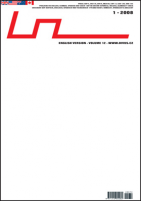




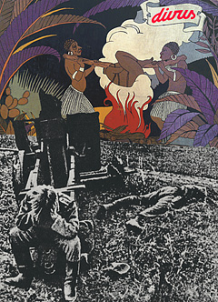












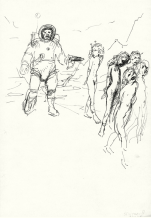
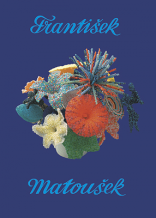
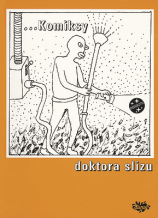


 We Are Rising National Gallery For You! Go to Kyjov by Krásná Lípa no.37.
We Are Rising National Gallery For You! Go to Kyjov by Krásná Lípa no.37.
Комментарии
Статья не была прокомментированаДобавить новый комментарий